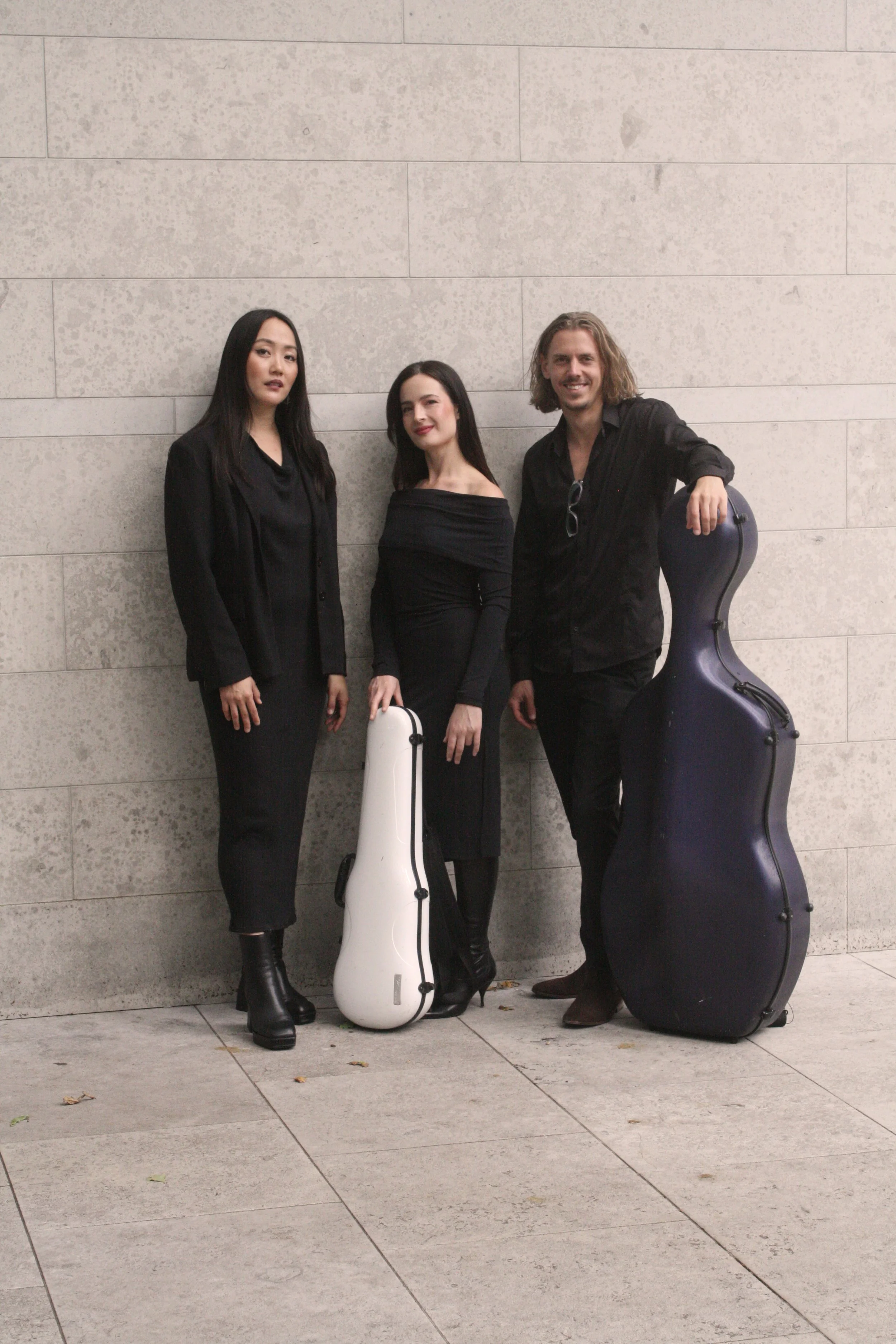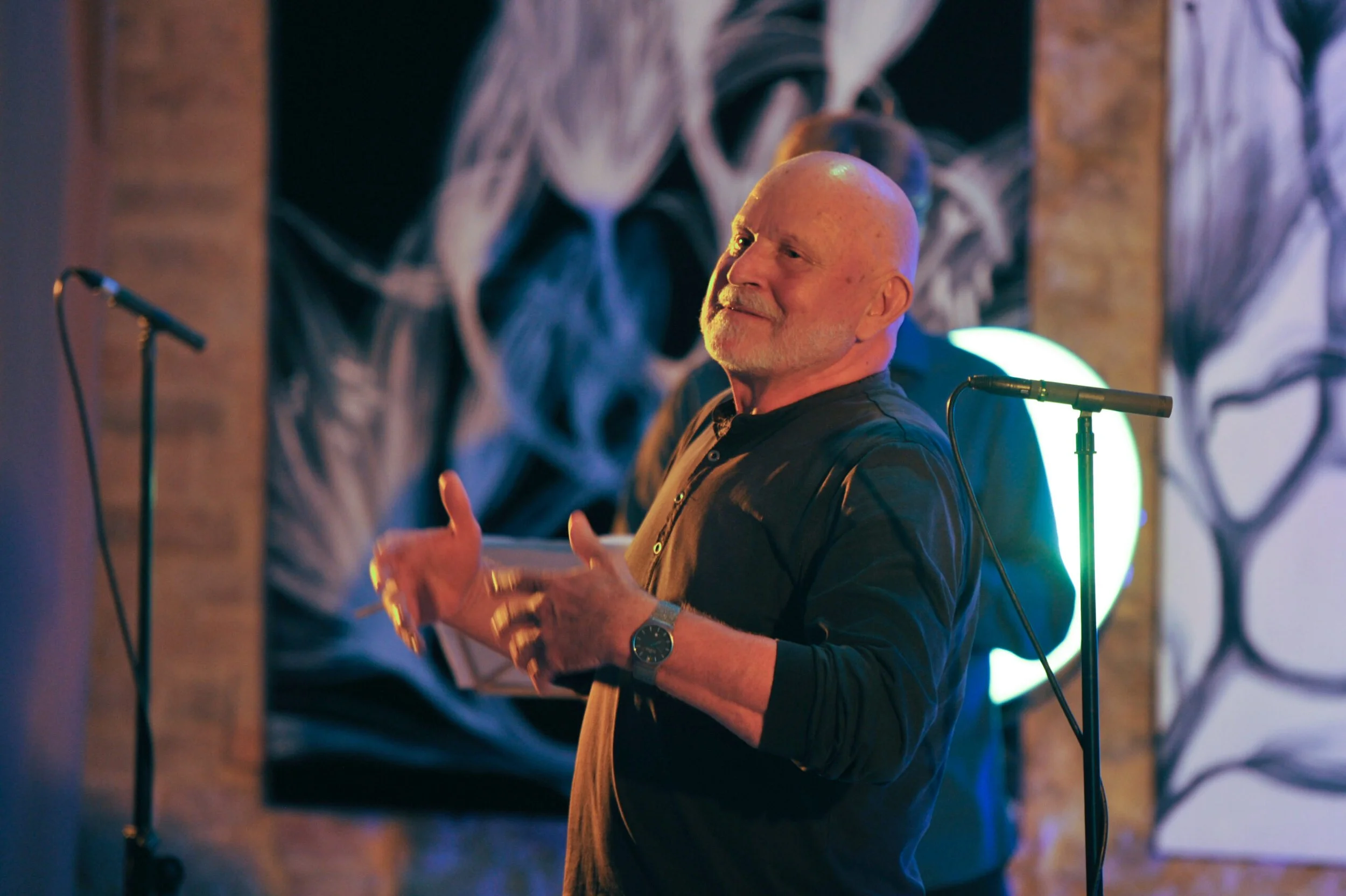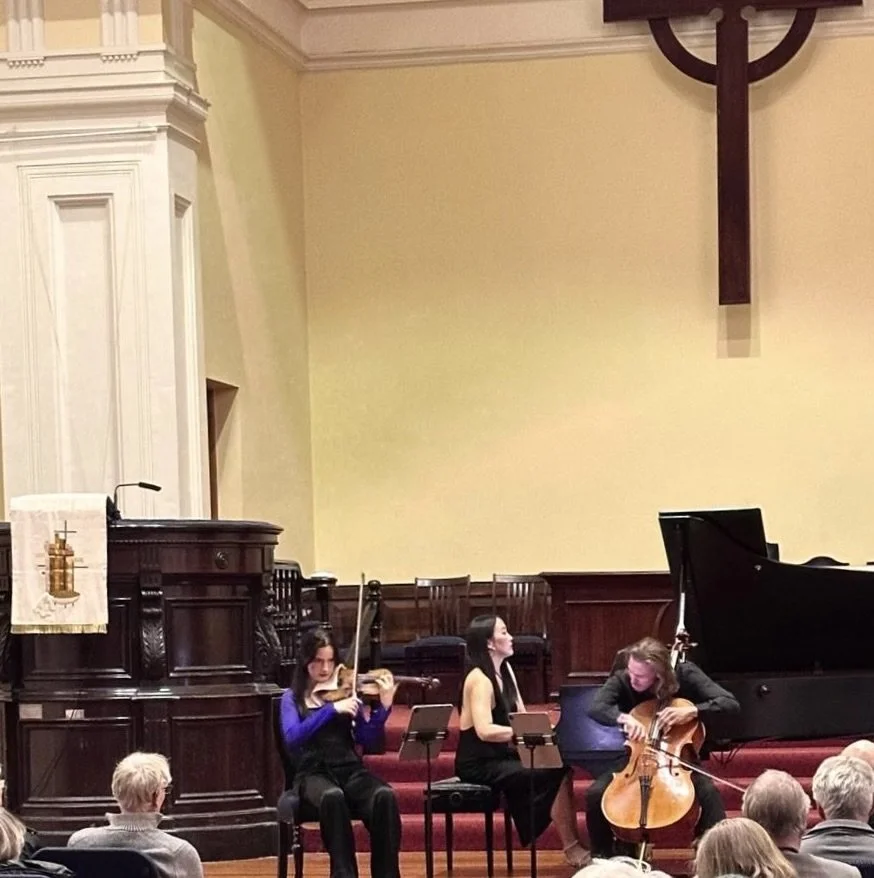NZTrio’s Magnifique: variety and virtuosity
NZ Trio (from left) Somi Kim (piano), Amalia Hall (violin) and Matthias Balzat (cello)
Photo supplied
The NZTrio eased its audience into its exhilarating ‘Magnifique’ programme with a gentle Notturno in E flat, written by Franz Schubert in the last year of his life. The composer, who died aged 31, never heard the work performed but would undoubtedly have enjoyed the gentle, subtle musicianship of the NZTrio.
In the first concert of its new line-up, with acclaimed young cellist Matthias Balzat taking over from founder member Ashley Brown, the Trio offered a lovely performance of this simple, melodious work, violinist Amalia Hall and Balzat in magically harmonious unanimity over the rippling piano accompaniment of Somi Kim.
Many in the audience, myself included, would have known little about composer Pēteris Vasks, apparently one of Latvia’s most famous composers. As he approaches his 80th birthday, his website lists an impressive compositional oeuvre and NZTrio have chosen his 40-year-old Episodi e canto perpetuo, a Hommage à O. Messiaen, for what is probably a New Zealand premiere.
Latvian composer Pēteris Vasks
“…his Episodi e canto perpetuo is a homage to Olivier Messiaen”.
Photo credit: Aivars Liepiņš
The 8-movement homage found its inspiration in Messiaen’s famous Quartet for the End of Time, which Vasks heard first as a student, describing it as “a lightning flash”. This composition was the programme highlight for me, from the widespread piano chords and rocking string melodies of its peaceful opening to a final coda, drifting in a higher tessitura to ethereal heavenly evaporation.
All was by no means serene in between, and some movements were directly reminiscent of Messiaen’s work – the passionate, spikily rhythmic unison lines of the 3rd movement, Unisono, for instance, strongly referenced Messiaen’s 6th, his Danse de la fureur, pour les sept trompettes. In two rapid, sometimes ironic, Burlesca movements the NZTrio had the audience on the edge of their seats with compelling virtuosity. Balzat’s lightly percussive, bouncing col legno playing was beautifully handled, and the huge climax of the second Burlesca created a peak of intensity ending with Kim’s imperious whole-of-keyboard glissando.
Messiaen’s Quartet has two gorgeous, sweetly romantic “praise” movements, called Louanges, for cello and violin solo with piano. Vasks has acknowledged these in his closing Canto perpetuo, with soaring melodies from first cello and then violin, before the celestial Apogeo e coda. Yet again, NZTrio has introduced its audiences to a new and exciting work, played with outstanding commitment and skill.
After the interval, the atmosphere lightened with a new work from Los Angeles-based New Zealand composer, Linda Dallimore. Her Self Portrait is perhaps also a portrait of LA itself, describing her impressions while adjusting to her environment. The piece moves from an attractive opening of oscillating harmonies to a soundscape of this city of cars. Sometimes we’re amongst the fast tempi of freeway traffic; sometimes we’re in the club, grooving to slidy strings, little jazzy riffs and bluesy harmonies as a DJ scrubs at the turntable. Finally, this short and nimble work flutters off much as it began.
NZTrio performing at St Andrews-on-the-Terrace in Wellington
“…Saint-Saëns’ Piano Trio No 2 in E minor proved a marvellous showcase for their virtuosity.”
Photo credit: Jessica Duirs/NZTrio
Hall introduced as “the epitome of romanticism” the programme’s final composition, Camille Saint-Saëns’ Piano Trio No 2 in E minor. The lush, five-movement work proved a marvellous showcase for the virtuosity of all three musicians, Kim’s astonishingly sensitive collaboration and marvellously fluent pianism particularly evident. As in the Schubert, Hall and Balzat formed a tight melodious unit with effortless rapport in the string duets.
Saint-Saëns demands the full Romantic range, rich textures in the first movement, a seductive little rhythmic skip in the main theme of the second. The Andante third is by no means a “slow” movement, and the Trio maintained a nice pace in the music’s unapologetic lyricism, with musicianly use of rubato and great variety of colour and dynamics. There was no ‘Hollywood’ when this Trio was written in the early 1890’s, but the work has some of the romantic opulence of early film music.
The jaunty Grazioso 4th movement drew brilliant, joyous playing from all three musicians, exchanging smiles as they revelled in the fleet and flowing dances. In the final Allegro, Saint-Saëns introduces a fugal section, the work threatening to lose its way at times in surging, contrapuntal lines. The Trio, however, pulled the textures together in a full-on performance, the final moto perpetuo particularly impressive and the audience erupting into delighted applause.
The ovation was rewarded with a clever choice of encore, a trio arrangement of Saint-Saëns’ famous Le Cygne (The Swan). It showed off Balzat’s fine sound and style before Hall’s beautiful violin tone took over the beloved melody. The whole concert was a wonderful debut for the new NZTrio line-up, assuring audiences of the ensemble’s on-going commitment to both adventurous programming and splendid performances.
NZTrio Triomphe 1 ‘Magnifique’ was performed in Wellington, Featherston and Palmerston North, May 2-4, 2025, with upcoming performances in Auckland, Cambridge, Rotorua and Whakatane, May 11-16, 2025. More information here.
You can read a Five Lines profile of NZTrio’s new cellist Matthias Balzat here



